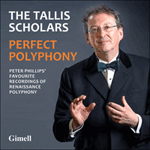Optime pastor was written to celebrate the meeting of Maximilian I’s Chancellor, Cardinal Lang, with the newly elected Pope Leo X in December 1513. This had especial relevance for Isaac since Leo was Giovanni de’ Medici, the son of Lorenzo the Magnificent his previous employer, and formerly one of Isaac’s own pupils. This first meeting of the Pope and the Chancellor was a political event of the highest importance, encouraging both Isaac and the unknown poet of the main text of the piece to strain every faculty for references and hidden meanings. The words, written in hexameters, include clever allusions: the ‘doctor’ of the opening lines is derived from the word ‘Medici’ through the Latin ‘medicus’; the ‘queen of birds’, which comes later in the first half, refers to the eagle in the imperial coat of arms; later still the ‘king of beasts’ is a pun on the lion or ‘Leo’, the Pope’s name. The librettist even sneaks in a reference to one of Maximilian’s main concerns of foreign policy—a war against the Turks. Isaac, for his part, undertook the doubly impressive task of setting his polyphony around two different plainchants, stated at the same time, each carrying texts relevant to the occasion, namely
Da pacem and
Sacerdos et pontifex. The chants are given complete in both halves of the motet, though, as was customary, this was done in diminution in the second part. Both halves end with the same words and similar music, the second statement splendidly extended into the most abstract pattern-music, a tribute to Isaac’s Flemish training.
from notes by Peter Phillips © 1991
Optime pastor fut écrit pour célébrer la rencontre, en décembre 1513, du cardinal Lang, chancelier de Maximilien Ier, avec le pape Léon X, qui venait d’être élu. Pour Isaac, cet événement avait un sens tout particulier puisque Léon était Jean de Médicis, l’un de ses anciens élèves, fils de Laurent le Magnifique, son précédent employeur. Cette première rencontre entre le pape et le chancelier fut un événement politique de première importance, donnant à Isaac et au poète inconnu du texte principal de l’oeuvre l’occasion de faire appel à tout leur talent pour jouer sur les références et les sens cachés. Les mots, écrits en hexamètres, comportent de fines allusions: le «médecin» des premiers vers est dérivé du mot «Médicis» via le latin «medicus»; la «reine des oiseaux» qui apparaît plus tard dans la première partie renvoie à l’aigle figurant sur les armoiries impériales; puis le «roi des animaux» est un jeu de mots sur le lion ou «Léon», le nom du pape. Le librettiste glisse même une allusion à l’un des soucis majeurs de Maximilien en matière de politique étrangère—une guerre contre les Turcs. Isaac, quant à lui, entreprit une tâche impressionnante à double titre, celle de composer sa polyphonie autour de deux plains-chants différents, énoncés au même moment, avec pour chacun des textes convenant à la circonstance, savoir
Da pacem et
Sacerdos et pontifex. Les plains-chants sont donnés dans leur intégralité dans les deux parties du motet bien que, selon l’usage, cela se fît en diminution dans la seconde partie. Les deux parties s’achèvent sur les mêmes mots et sur une musique semblable, la seconde se prolongeant de manière splendide en un schéma musical des plus abstraits, ce qui témoigne de la formation flamande d’Isaac.
extrait des notes rédigées par Peter Phillips © 1991
Français: Meena Wallaby
Optime pastor wurde zur Feier des Treffens von Kardinal Lang, dem Kanzler Maximilians I., und dem neugewählten Papst Leo X. im Dezember 1513 geschrieben. Dieses war für Isaac von besonderer Bedeutung, denn Leo war Giovanni de’ Medici, der Sohn seines früheren Arbeitgebers Lorenzo des Prächtigen und einst Isaacs Schüler. Dieses erste Treffen von Papst und Kanzler war ein höchst bedeutendes politisches Ereignis, das sowohl Isaac als auch den unbekannten Textdichter dieses Stückes zu allen möglichen direkten und versteckten Anspielungen anregte. Die Worte, in Hexametern, enthalten gewitzte Anspielungen: Der „Arzt“ im zweiten Vers leitet sich über den Umweg des lateinischen „medicus“ von „Medici“ ab; die „Königin der Vögel“ später im ersten Teil bezieht sich auf den Adler im kaiserlichen Wappen; der „König der Tiere“ ist ein Wortspiel für den Löwen—oder Leo, den Namen des Papstes. Der Textdichter schmuggelt sogar eine Anspielung auf eine der Hauptangelegenheiten in Maximilians Außenpolitik ein: Krieg gegen die Türken. Isaac seinerseits machte sich an die doppelt eindrucksvolle Aufgabe, seine Polyphonie auf zwei verschiedenen Choralgesängen aufzubauen, die gleichzeitig aufgestellt werden und jeweils einen dem Anlaß angemessenen Text tragen, nämlich
Da pacem und
Sacerdos et pontifex. Die Choralgesänge werden in beiden Teilen der Motette jeweils vollständig gesungen, wenn auch wie üblich im zweiten Teil in Diminution. Beide Teile schließen mit den gleichen Worten und ähnlicher Musik, wobei die zweite Äußerung sich herrlich in besonders abstrakte „Modell-Musik“ ausweitet—ein Rückgriff Isaacs auf seine flämische Ausbildung.
aus dem Begleittext von Peter Phillips © 1991
Deutsch: Renate Wendel


 Perfect Polyphony
Perfect Polyphony
